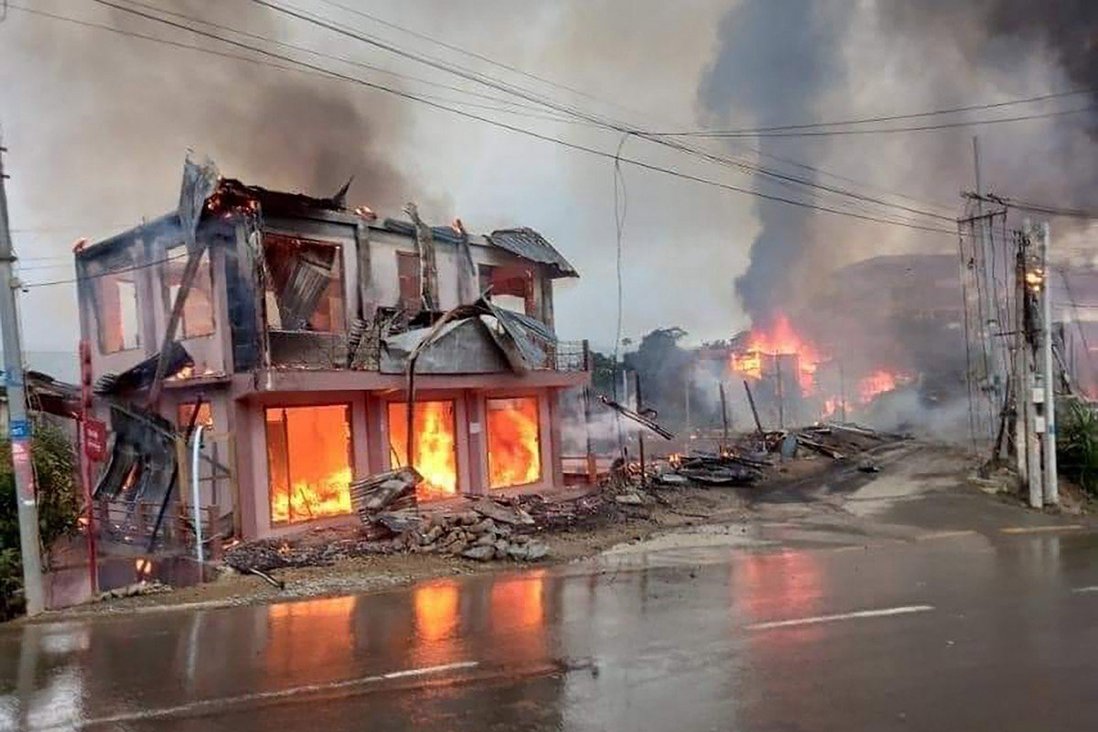SAC-M statement quoted in the South China Morning Post
Tortured, executed, shot: a junta’s way of death in post-coup Myanmar
As the UN secretary general Antonio Guterres warns the window for action is closing, experts liken the alleged atrocities of Min Aung Hlaing’s forces to those of Islamic State
2 October, 2021
By Min Ye Kyaw
From activists to United Nations officials, the world’s watchdogs have been warning about the human rights abuses taking place in Myanmar as the military cracks down on anti-junta forces and protesters.
In the latest of these warnings, the UN secretary general Antonio Guterres this week said the window to prevent junta chief Min Aung Hlaing’s forces from entrenching their now seven-month de facto rule of the country was closing, and once again called for a unified international response.
His remarks – in a report released on Wednesday – came as the 16-day UN General Assembly came to an end with little meaningful action by countries to de-escalate the violence.
Guterres said, in a report titled “Situation of human rights of Rohingya Muslims and other minorities in Myanmar”, that those expressing opposition to the military and joining democratic movements were being subject to “arbitrary killings and detention, disappearances, night raids, intimidation and torture”.
The Special Advisory Council for Myanmar group said this week that it was time for the UN Security Council to label the junta a “terrorist organisation”.
The following are three recent atrocities allegedly committed by the Tatmadaw – as the Myanmar military is known locally. The accounts are based on local media reports and eyewitness interviews with This Week in Asia. The State Administration Council, as Min Aung Hlaing’s ruling cabal calls itself, denies that it is responsible for mass killings. It says its actions are aimed at restoring peace and stability.
Midnight ambush
In the most recent incident, four people were forcibly removed from their flat near the Myay Ni Gone flyover in Yangon on September 23 before being tortured and shot to death in the city’s Sanchaung township.
Zin Lin’s wife has since been detained by the military and her whereabouts are unknown, a source close to the doctor told This Week in Asia on Wednesday.
Fighting in Chin state
Also in mid-September, the Myanmar Now website reported that three civilians were summarily executed in Chin state, where the Chinland Defence Force – a new insurgent group – has sprung up in opposition to the junta. The remains were found at an airport construction site, and were initially buried before they were exhumed, burnt and dumped in a ditch, according to a CDF fighter who spoke to Myanmar Now.
Village plunder
A September 10 stand-off in the Myintha village within the Magway Region’s Gangaw township ended with the deaths of 17 villagers. Thirteen of the casualties were guerilla fighters belonging to the anti-junta local defence force.
Aye Aye Moe, a 35-year-old resident of the village, told This Week in Asia in a phone interview that the victims were “just students who were guarding the entrance of our village”.
The villagers had stationed the men there after hearing that security forces in the nearby Thar Lin village had set a house on fire.
After arriving in the village, the soldiers handcuffed village elder Tun Ngwe, 75, and forced him to walk them to the centre of the village.
“They then started setting on fire 18 houses and two barns, forcing us to flee to the nearby hilltops, except for a few women and men who went to hide in a small monastery,” Aye said.
The ordeal did not end there. In the afternoon, the soldiers entered the monastery and made the villagers hiding there “kneel in the hot sun”. They also destroyed villagers’ mobile phones – used to record the assault on the village – and stole a truck from the monastery.
“The children who were arrested and slain are still on our minds … I want to call on the whole country to fight against the evil military dictatorship so that they too suffer as we have,” Aye said.


